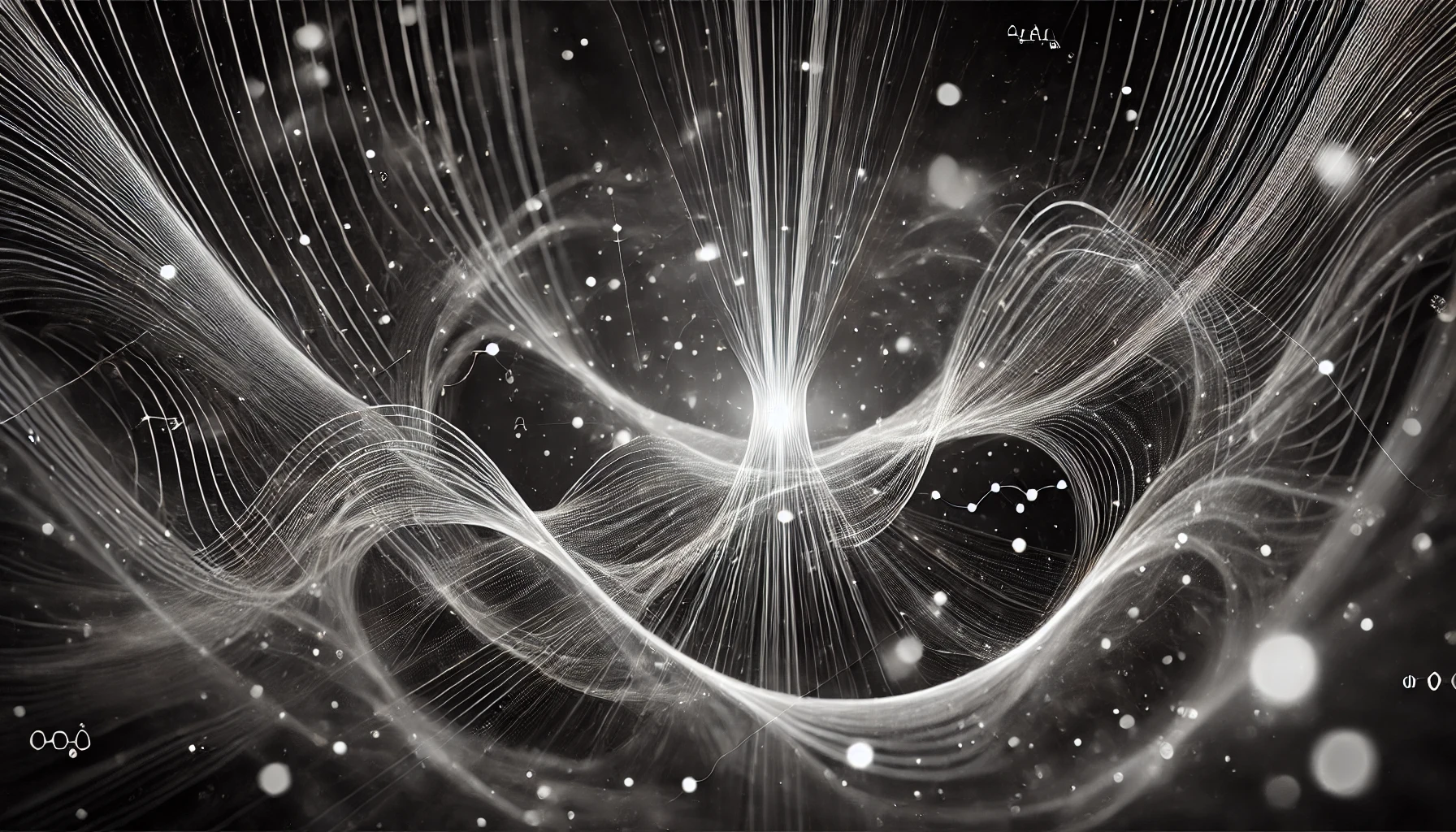Table of Contents
Quantum physics, the branch of science that explores the behavior of matter and energy at the smallest scales, has revolutionized our understanding of the universe. Key experiments in quantum physics have not only confirmed the strange and counterintuitive nature of quantum phenomena but have also laid the groundwork for numerous technological advancements.
Also, these experiments have provided deep insights into the fundamental nature of reality, challenging classical notions and opening up new avenues for scientific inquiry and technological innovation.
The Double-Slit Experiment
The double-slit experiment is one of the most famous and foundational experiments in quantum physics. It demonstrates the wave-particle duality of matter and the role of the observer in determining the outcome of quantum events.
Setup and Procedure
In the double-slit experiment, particles such as electrons or photons are fired at a barrier with two slits. A detection screen is placed behind the barrier to observe the pattern formed by the particles.
Results and Implications
When both slits are open and no observation is made, the particles create an interference pattern on the detection screen, indicative of wave-like behavior. However, when one slit is observed, the interference pattern disappears, and the particles behave like individual particles. This experiment highlights the dual nature of particles and the impact of observation on quantum systems.
Quantum Entanglement Experiments
Quantum entanglement is a phenomenon where particles become interconnected in such a way that the state of one particle instantaneously influences the state of another, regardless of the distance between them. Several experiments have confirmed the reality of quantum entanglement, defying classical intuitions about locality and separability.
Aspect’s Experiment (1982)
Alain Aspect and his team conducted a series of experiments in 1982 that tested Bell’s theorem, which distinguishes between the predictions of quantum mechanics and classical physics regarding entanglement.
Setup and Procedure
Aspect’s experiment involved entangled photons and measured their polarization states at distant detectors. The results were analyzed to test the correlations predicted by quantum mechanics.
Results and Implications
Aspect’s results confirmed the predictions of quantum mechanics, demonstrating that entangled particles exhibit correlations that cannot be explained by classical physics or local hidden variables. This experiment provided strong evidence for the non-local nature of quantum entanglement.
The Stern-Gerlach Experiment
The Stern-Gerlach experiment, conducted in 1922, demonstrated the quantization of angular momentum and the existence of quantum spin.
Setup and Procedure
In this experiment, a beam of silver atoms was passed through a non-uniform magnetic field. The magnetic field interacted with the magnetic moments of the atoms, causing them to deflect in different directions based on their spin states.
Results and Implications
The experiment showed that the silver atoms were deflected into discrete spots on a detector screen, rather than a continuous distribution. This result indicated that the angular momentum (spin) of the atoms was quantized. The Stern-Gerlach experiment was crucial in the development of quantum mechanics and the understanding of spin.
The Quantum Zeno Effect
The Quantum Zeno Effect describes the phenomenon where frequent observation of a quantum system can inhibit its evolution, essentially “freezing” the system in its initial state.
Setup and Procedure
In experiments demonstrating the Quantum Zeno Effect, unstable quantum systems (such as decaying particles) are observed repeatedly over short intervals. The decay rate is measured and compared to the expected rate without observation.
Results and Implications
The experiments showed that frequent observation slowed down the decay process, confirming the Quantum Zeno Effect. This phenomenon underscores the role of measurement in quantum mechanics and has implications for quantum control and computation.
Delayed-Choice Experiment
The delayed-choice experiment, proposed by John Archibald Wheeler, explores the impact of measurement on the behavior of particles, even after they have passed through a slit or a path.
Setup and Procedure
In this experiment, particles are sent through a double-slit apparatus, and the decision to observe which path the particle took is made after the particle has passed through the slits but before it reaches the detection screen.
Results and Implications
The results showed that the choice of measurement affects the outcome, demonstrating that the act of measurement retroactively influences the particle’s behavior. This experiment challenges classical notions of causality and suggests that reality is not fixed until it is observed.
From the wave-particle duality demonstrated by the double-slit experiment to the non-local correlations of entangled particles and the Quantum Zeno Effect, these experiments reveal the strange and fascinating world of quantum mechanics.
These groundbreaking experiments not only challenge our classical intuitions but also pave the way for technological advancements in fields such as quantum computing, cryptography, and communication.
Bibliography
- Aspect, Alain, et al. “Experimental Realization of Einstein-Podolsky-Rosen-Bohm Gedankenexperiment: A New Violation of Bell’s Inequalities.” Physical Review Letters (1982).
- Feynman, Richard P. QED: The Strange Theory of Light and Matter.
- Wheeler, John Archibald. At Home in the Universe.
- Zurek, Wojciech H. Quantum Theory and Measurement.
- Zeilinger, Anton. Dance of the Photons: From Einstein to Quantum Teleportation.
FAQ
- What is the double-slit experiment?
The double-slit experiment demonstrates the wave-particle duality of particles and the impact of observation on quantum systems. - What is quantum entanglement?
Quantum entanglement is a phenomenon where particles become interconnected, influencing each other’s states instantaneously regardless of distance. - What did Aspect’s experiment confirm?
Aspect’s experiment confirmed the non-local nature of quantum entanglement, supporting the predictions of quantum mechanics. - What is the Stern-Gerlach experiment?
The Stern-Gerlach experiment demonstrated the quantization of angular momentum (spin) in atoms. - What is the Quantum Zeno Effect?
The Quantum Zeno Effect describes the phenomenon where frequent observation inhibits the evolution of a quantum system. - What is the delayed-choice experiment?
The delayed-choice experiment explores how the act of measurement retroactively influences the behavior of particles. - How does the double-slit experiment impact our understanding of reality?
It shows that particles can exhibit both wave-like and particle-like behavior and that observation affects the outcome. - What are the implications of quantum entanglement?
Quantum entanglement suggests that particles are interconnected in ways that defy classical physics, with implications for quantum communication and computing. - Why is the Stern-Gerlach experiment important?
It provided direct evidence for the quantization of angular momentum, a key concept in quantum mechanics. - How does the Quantum Zeno Effect relate to measurement in quantum mechanics?
It demonstrates that the act of measurement can influence the behavior and evolution of quantum systems. - What does the delayed-choice experiment reveal about causality?
It challenges classical notions of causality by showing that future measurement choices can influence past events in the quantum realm. - How do these experiments contribute to technological advancements?
They provide foundational knowledge for developing technologies such as quantum computing, cryptography, and communication. - What is wave-particle duality?
Wave-particle duality is the concept that particles, like electrons and photons, exhibit both wave-like and particle-like properties. - What are Bell’s inequalities?
Bell’s inequalities are mathematical inequalities that distinguish between the predictions of quantum mechanics and classical physics regarding entanglement. - What role does observation play in quantum mechanics?
Observation plays a crucial role in determining the state and behavior of quantum systems, as demonstrated by various experiments. - How does the double-slit experiment relate to the observer effect?
It shows that the act of observing which slit a particle passes through changes the outcome from an interference pattern to a particle-like pattern. - What is the significance of non-locality in quantum mechanics?
Non-locality indicates that particles can instantaneously influence each other over any distance, a key feature of quantum entanglement. - What is the importance of the interference pattern in the double-slit experiment?
The interference pattern demonstrates the wave-like behavior of particles when not observed, highlighting the dual nature of quantum objects. - How has quantum mechanics changed our understanding of physics?
Quantum mechanics has introduced concepts like superposition, entanglement, and the observer effect, fundamentally altering our understanding of reality. - What are the practical applications of quantum physics experiments? Applications include advancements in quantum computing, secure communication, cryptography, and our overall understanding of the universe.


Leave a Reply